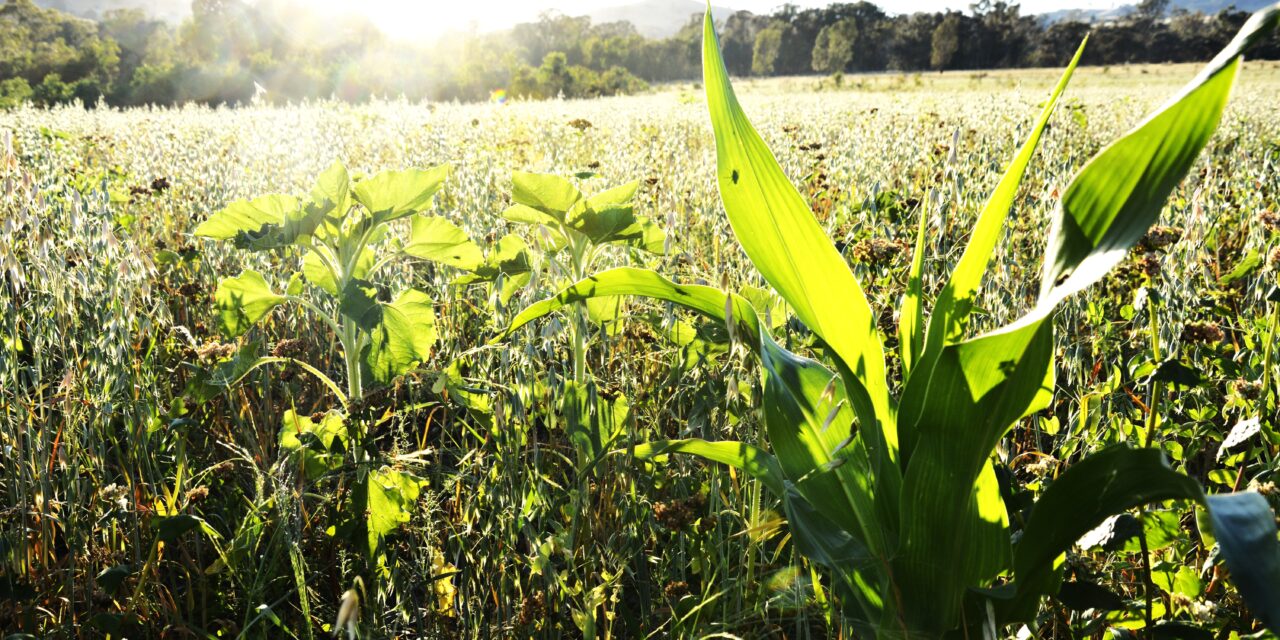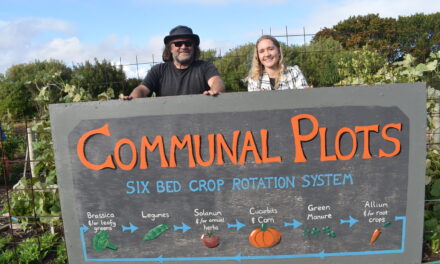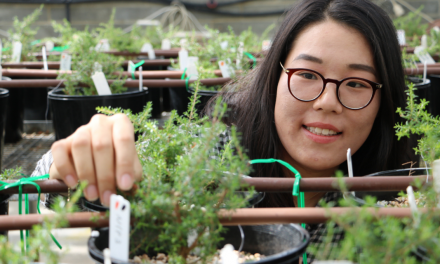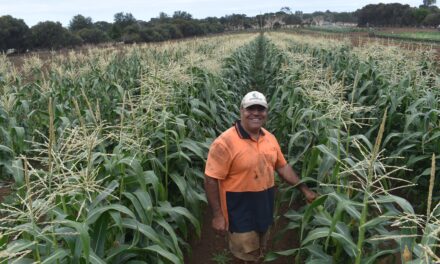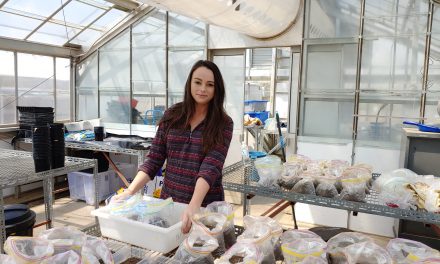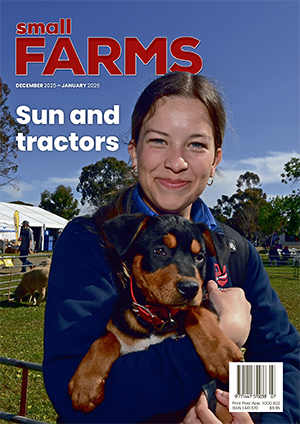Like everything in life, diversity is key in new soil management practices that are causing a flourishing forage pasture to head skyward on a farm in north-eastern Victoria. ANDY WILSON had a look for himself.
On an Upton Hill cattle farm, there’s a paddock containing a range of pasture plants that includes some more familiar in a summer vegetable garden.
The odd corn stalk rises from a collection of common forage species including broccoli-looking purple top turnip and rape, along with sunflowers.
The regime is now in its seventh year and farm manager Callum Lawson hosted Small Farms on a dawn tour through what he described as a “cracking” paddock.
But the species choice is only a third of the story.
“We also treat the soil with composts and organic mixtures of vermiliquid and vermicasts from worm excrement, fish hydrolysate and molasses,” Callum said.
“I’ve seen amazing results; the yield is on par with normal pasture, but is far more healthy as it provides more nutrients.
“And it costs about half that of using chemicals.”
The compost and fertiliser regime is chemical-free and deters pests that would otherwise attack the species mix.
“It keeps away rusts and bugs, such as the redlegged earth mite and cabbage moth.
“The extra sugars in the plant, which have a brix of over 14, keep them away.
“They can’t digest the more complex sugars.”
Brix is a unit of sugar content for both fruit and pasture plants with the value of 12 indicating a healthy plant.
The RLEM (Halotydeus destructor) is an introduced species from South Africa which discolours and shrinks leaves which is often mistaken for frost damage.
Humic acid in vermiliquid strengthens plant defences against insects and mites.
“Oh, it really works; you can see it in the health of the plants,” Callum said.
“It’s unreal.”
The soil improvement is part of Landcare’s Hughes Creek Catchment Collaborate soil program which was boosted in 2023 with an $18,000 government grant.
The group has trialled 12 plots of different products on three farms.
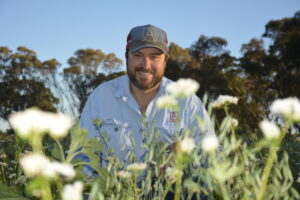
Mr Lawson described the results of the pasture mixture as ‘amazing’. The yield is on par with normal pasture but is considered healthier.
And it costs about half that of using chemicals.
Climate change is also addressed by the sown species.
HCCC president Justus Hagen said the project tied in with Landcare’s commitment to carbon catchment, with the variety of species being able to sequester carbon into the soil.
“This addresses regenerative farming and better management of the land,” Justus said.
“The $18,000 will be used for facilitating events and field days with guest speakers.”
Soil carbon testing began in the trial three years ago.
“A few farmers have elected to do the tests, which aren’t cheap.”
Justus praised the commitment of Landcare members, who withstand bitterly cold days to attend workshops.
Membership of the HCCC is deemed automatic for anyone who subscribes to Granite News, a weekly online newsletter.
“It’s a valuable tool for us to get information out,” Justus said.
“That’s the thing, there’s no official membership, you are an associate of the group by virtue of being a reader.”
Readers can then join the 200 ‘bona fide’ members, free of charge.
The HCCC has seen success with fencing of river riparia to stop erosion from livestock and has been effective reducing rabbit numbers.
Justus’ wife Janet is known widely as ‘Mrs Rabbit Buster’, coordinating the ripping of warrens and spraying blackberries which also harbour the pest.
“Things now look better than in the 1970s and ’80s when paddocks were bare.”
Justus said the group was seeking more funding from the corporate sector, including a soft drink company wanting to provide seeding money for carbon offsetting.
He also said there were many activities for younger people to attend.
“The cry is always ‘more young people please’ and we have had a few from around Seymour, but they want to not just attend committees; they want to go out and do active things,” he said.
“Which they certainly can.”

